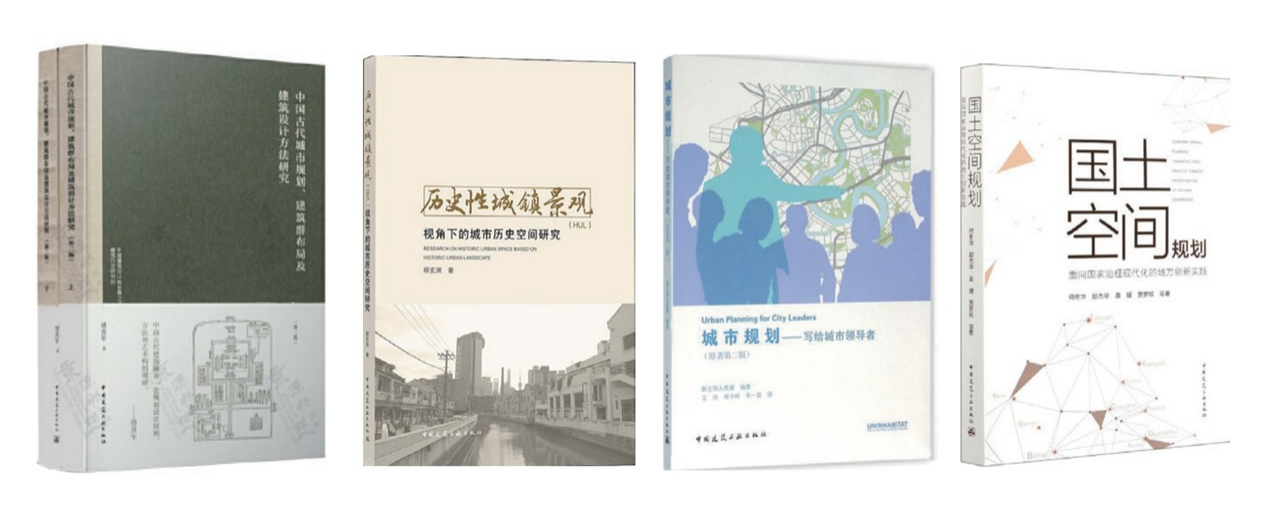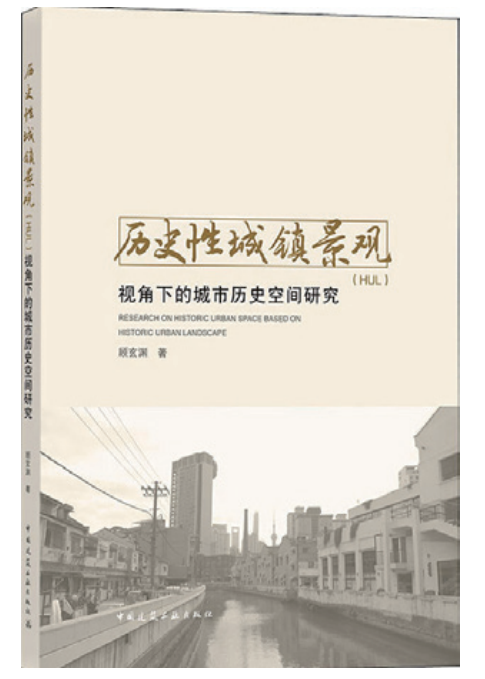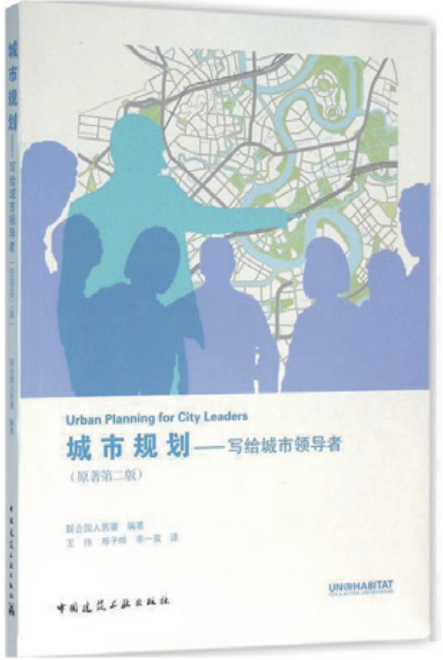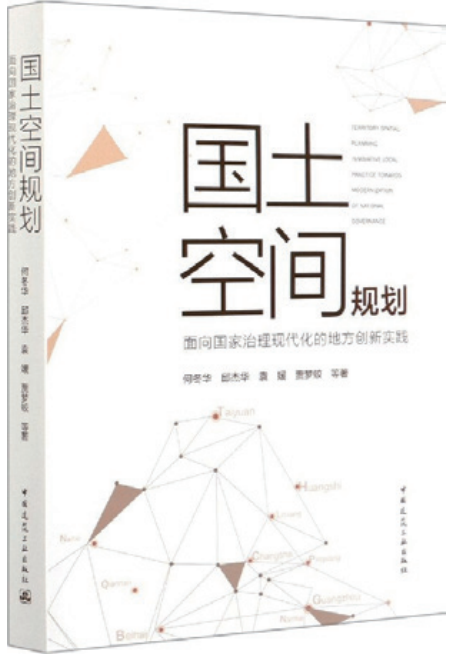


In the latest issue of CCPR (Vol.31, No.2, 2002), the column of book information recommends four books released recently with regard to different topics, including history of urban planning, the research about Historic Urban Landscape, a decision-making guidebook for urban planning, and the practices of Territory Spatial Planning.
A Study of Chinese Ancient Urban Planning, Building Group Layout, and Architectural Design Methods (2nd Edition)
Author: Fu Xinian
Year of publication: 2022
Publisher: China Architecture & Building Press
ISBN:9787112174980

The book-A Study of Chinese Ancient Urban Planning, Building Group Layout, and Architectural Design Methods (2nd Edition) consists of two volumes, the first volume is composed of essays, and the second volume contains atlas with 274 rigorous, accurate, and delicate illustrations. Through a systematic study of the ancient Chinese city planning, Fu Xinian discovered and demonstrated a set of planning and design principles, methods, and artistic composition laws in Chinese ancient architecture. These laws have been evolving with the course of time and changing circumstances. In the wake of these planning paradigms, Chinese ancient architecture has been able to maintain the independence and continuity of this unique architectural system throughout the history. This corpus provides a valuable insight into the history and theory of Chinese urban planning and architectural design for students, researchers and professionals in architectural subjects.
Research on Historic Urban Space Based on Historic Urban Landscape
Author: Gu Xuanyuan
Year of publication: 2020
Publisher: China Architecture & Building Press
ISBN:9787112174980

This book first systematically reviews and investigates Historic Urban Landscape (HUL) with respect to its development, concepts, approaches as well as practices. It then points out the positive significance of HUL in promoting the integration of urban development, urban identity, and heritage conservation. Meanwhile, the author also proposes the perspectives for the study of historic urban space, i.e., to study the composition of historic urban space from the relationship of historical stratification, to study the value of the historic space as the resources for urban development, and to study the conservation and development of historic urban space through the spatial management. Finally, the theories and methods mentioned earlier in this book are applied in the urban design of Shanghai, which can be taken as a pilot case for the integration of historic urban space conservation and regional development.
Urban Planning for City Leaders (2nd Edition)
Author: UN Habitat (edited), Wang Wei, Na Ziye, Li Yishuang (trans.)
Year of publication: 2022
Publisher: China Architecture & Building Press
ISBN:9787112185832

Written for city leaders and decision makers at a critical moment in human history, the book-Urban Planning for City Leaders (2nd Edition) is a valuable resource for information, ideas, and practices about urban planning. The projected population growth over the next 50 years will have a dramatic impact on all cities, especially medium-sized cities with populations under 2 million. By 2050, developed countries may need to double their existing urban space to accommodate the projected population numbers, while developing countries will need to expand their urban space by more than 300%.
The factors affecting cities and how we respond to problems including climate change, resource depletion, environmental degradation, and budget constraints, to name a few, which will not disappear, but are often ignored. Most cities will not be able to cope with population growth and other problems if they do not start preparing for potential issues now. This means planning, designing, financing, and implementing ideas for housing, transportation, waste disposal, commercial areas, parks, safety, road systems, and much more. Urban Planning for City Leaders (2nd Edition) is the beginning of the process of developing these plans. It focuses on forward-looking urban planning, on the critical role of shaping the future of cities, it also outlines practical ways for cities to create and realize a vision to better respond to growth and change. At the heart of this vision is the creation, protection, and enhancement of public resources (e.g. natural resources, climate, public health, safety) and the development of adequate urban assets (e.g. public spaces, infrastructure, a good mix of people and activities, adequate housing, etc.), both of which are necessary for people to thrive and for business to prosper.
The book includes several ‘how to’ chapters that answer frequently asked questions from leaders about various aspects of urban planning and present case studies that have played a significant and positive role in urban planning and policy.
Territory Spatial Planning: Innovative Local Practice Towards Modernization of the National Governance
Author: He Donghua, Qiu Jiehua, Yuan Yuan, Jia Mengjiao, et al.
Year of publication: 2020
Publisher: China Architecture & Building Press
ISBN:9787112249893

Based on more than ten cases of the local-level practices of territory spatial planning in Chinese cities (i.e. Taiyuan, Huangshi, Qiannanzhou, Beihai, Pingxiang, Shaoguan, Nanxi in Yibin, Linxiang in Hunan, Nanhai in Foshan, and Huangpu and Zengcheng in Guangzhou), this book reviews the development of territory spatial planning in China. It systematically summarises the paradigm of local spatial governance and planning from the perspectives of resources, space, and life. The book consists of nine chapters, exploring the relations between ‘change and reconstruction’, ‘governance and development’, ‘power and planning’, ‘strategy and responsibility’, ‘resource and boundary’, ‘space and scenario’, ‘control and rule’, ‘launching and practice’, ‘reflection and staring’. And it establishes an inherent logic system of ‘power – boundary – rule’ in the spatial governance mechanism. This book is a reference for researchers and practitioners in the relevant fields of natural resources and planning management, territorial and spatial planning, public administration, as well as for teachers and students in urban planning and land management.
Source: <https://mp.weixin.qq.com/s/fZ7-NluVWtUwX2i3BofRZQ>
Edited by Liang Xiuchun